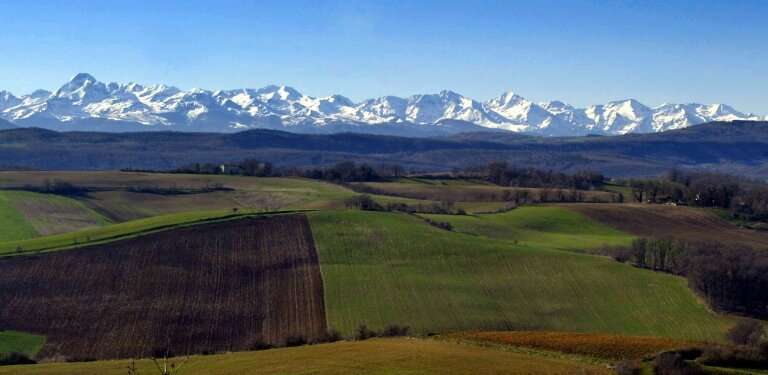Airborne plastic particles blanket remote mountains: study

A secluded mountain region thought to be free of plastic pollution is in fact blanketed by airborne microplastics on a scale comparable to a major city such as Paris, alarmed researchers reported Monday.
Over a five-month period in 2017-2018, an average of 365 tiny bits of plastic settled every day on each square metre of an uninhabited, high-altitude area in the Pyrenees straddling France and Spain, they reported in the journal Nature Geoscience.
"It is astounding and worrying that so many particles were found in the Pyrenees field site," said lead author Steve Allen, a doctoral student at the University of Strathclyde in Scotland.
The study focused on microplastics mostly between 10 and 150 micrometres across, including fragments, fibres and sheet-like pieces of film.
By comparison, a human hair is, on average, about 70 micrometres in width.
"We would never have anticipated that this study would reveal such high levels of microplastic deposits," added co-author Gael Le Roux, a researcher at EcoLab in Toulouse, in southwestern France.
Plastic litter has emerged in the last few years as a major environmental problem.
Up to 12 million tonnes of plastics are thought to enter the world's oceans every year, and millions more clog inland waterways and landfills.
Plastic takes decades to break down, and even then continues to persist in the environment.
Scientists are only now beginning to measure the damage to wildlife and potential impacts on human health.
A study earlier this year uncovered plastic fragments in the guts of animals living more than 10 kilometres below the ocean surface.
Two whales found beached since the start of the year—one in the Philippines, the other in Sardinia, Italy—had 40 and 20 kilos, respectively, of plastic in their stomachs.
Microplastics have also been found in tap water around the world, and even the furthest reaches of Antarctica.
As polluted as Paris
"Our most significant finding is that microplastics are transported through the atmosphere and deposited in a remote, high-altitude mountain location far from any major city," co-author Deonie Allen, also from EcoLab, told AFP.
"This means that microplastics are an atmospheric pollutant."
Researchers used two monitoring devices to independently measure particle concentration in an area long considered to be among the most pristine in western Europe.
The nearest village is seven kilometres (more than four miles) away, and the nearest city, Toulouse, is more than 100 kilometres.
While the scientists were able to identify the types of plastic, they could not say with certainty where they came from or how far they had drifted.
Analysing the pattern of air flows, they surmised that some particles had travelled at least 100 kilometres.
"But due to the lack of significant local plastic pollution sources, they probably travelled farther," Deonie Allen said.
Samples—transported by wind, snow and rain—were collected at the meteorological station of Bernadouze at an altitude of more than 1,500 metres.
The researchers were stunned to find that the concentrations of microplastic pollution were on a par with those found in major cities, including Paris and the southern Chinese industrial city of Dongguan.
"Our findings are within the range of those reported for greater Paris, and can thus be considered comparable," Deonie Allen told AFP.
"We did not expect the number of particles to be so high."
More information: Steve Allen et al. Atmospheric transport and deposition of microplastics in a remote mountain catchment, Nature Geoscience (2019). DOI: 10.1038/s41561-019-0335-5
Journal information: Nature Geoscience
© 2019 AFP



















